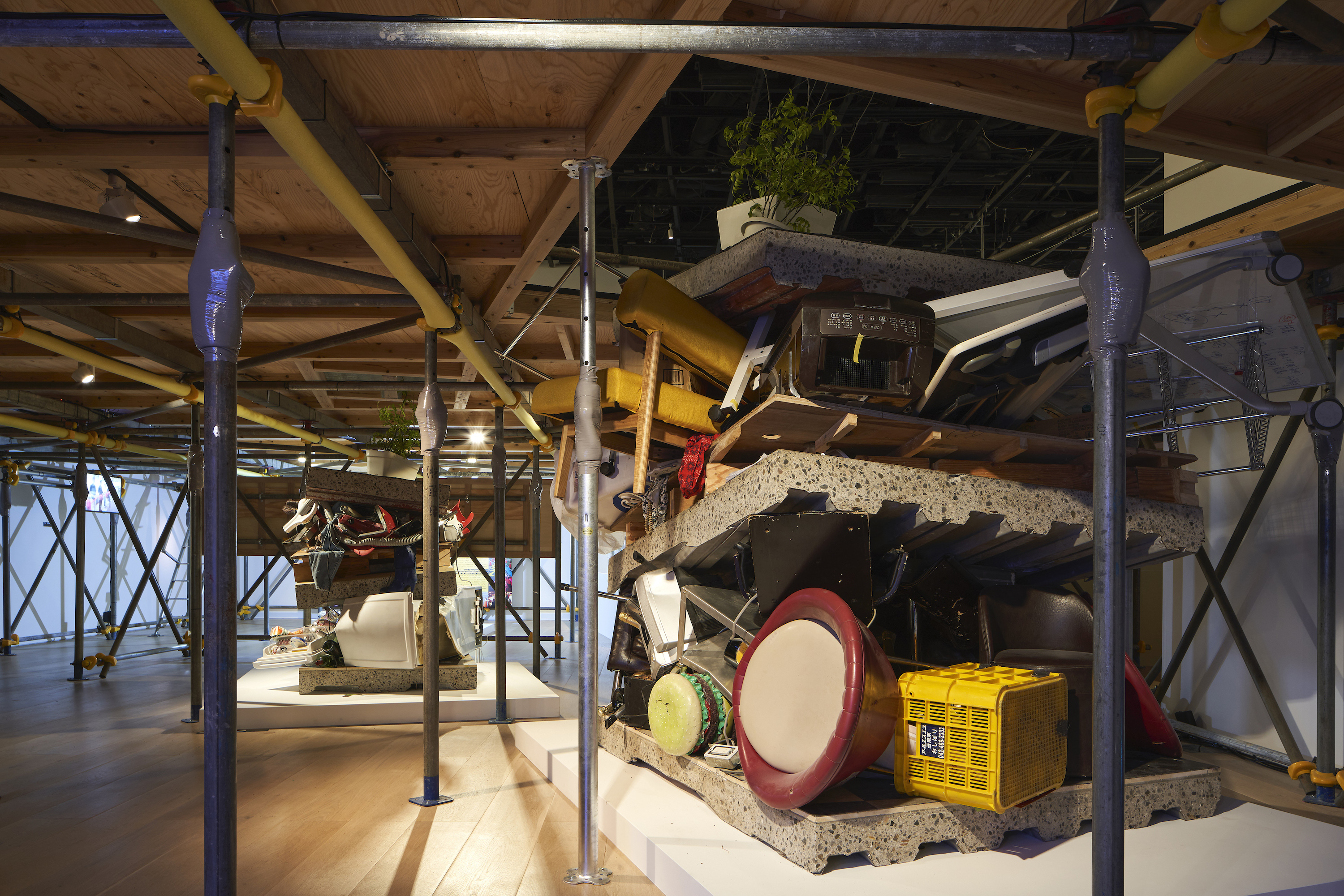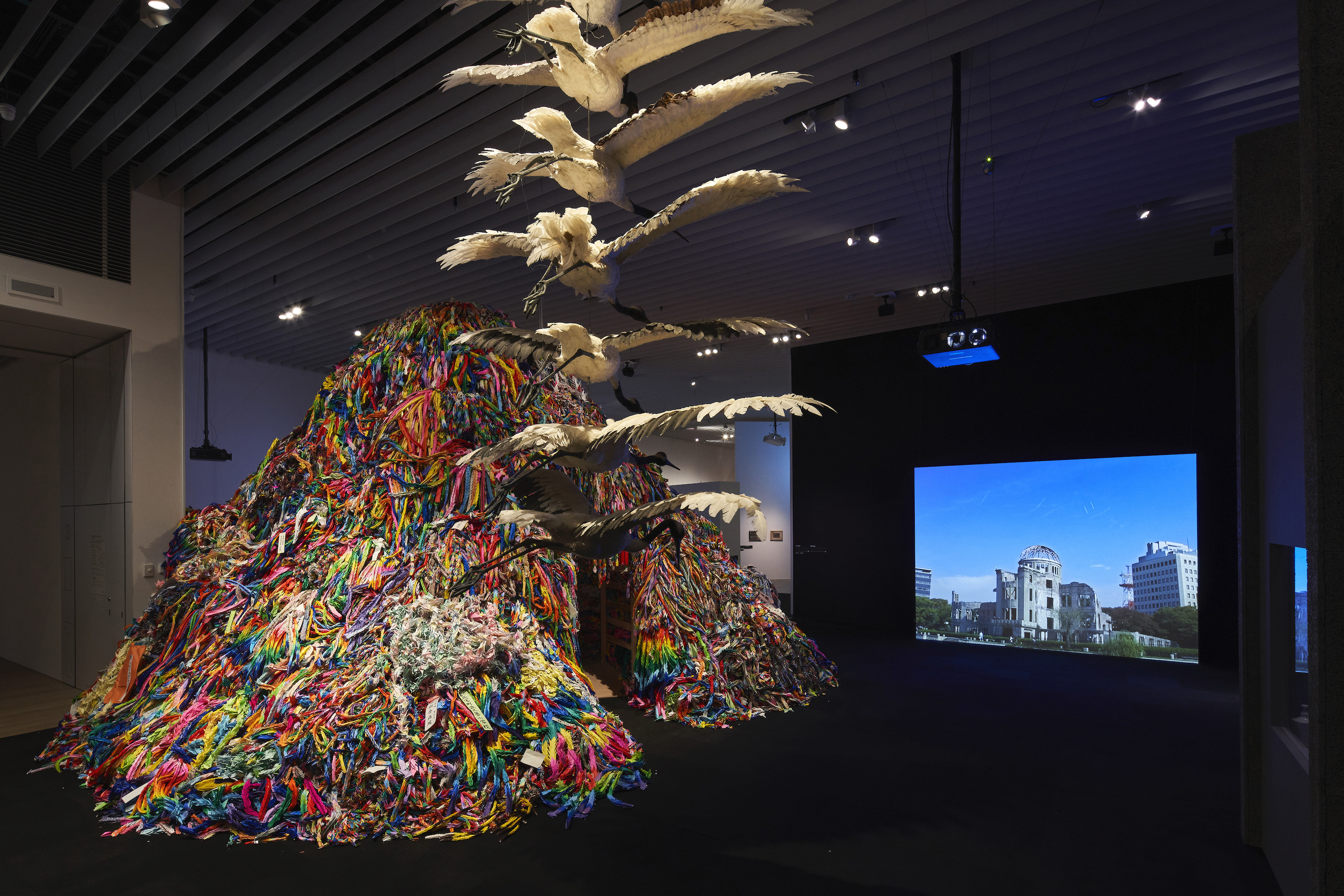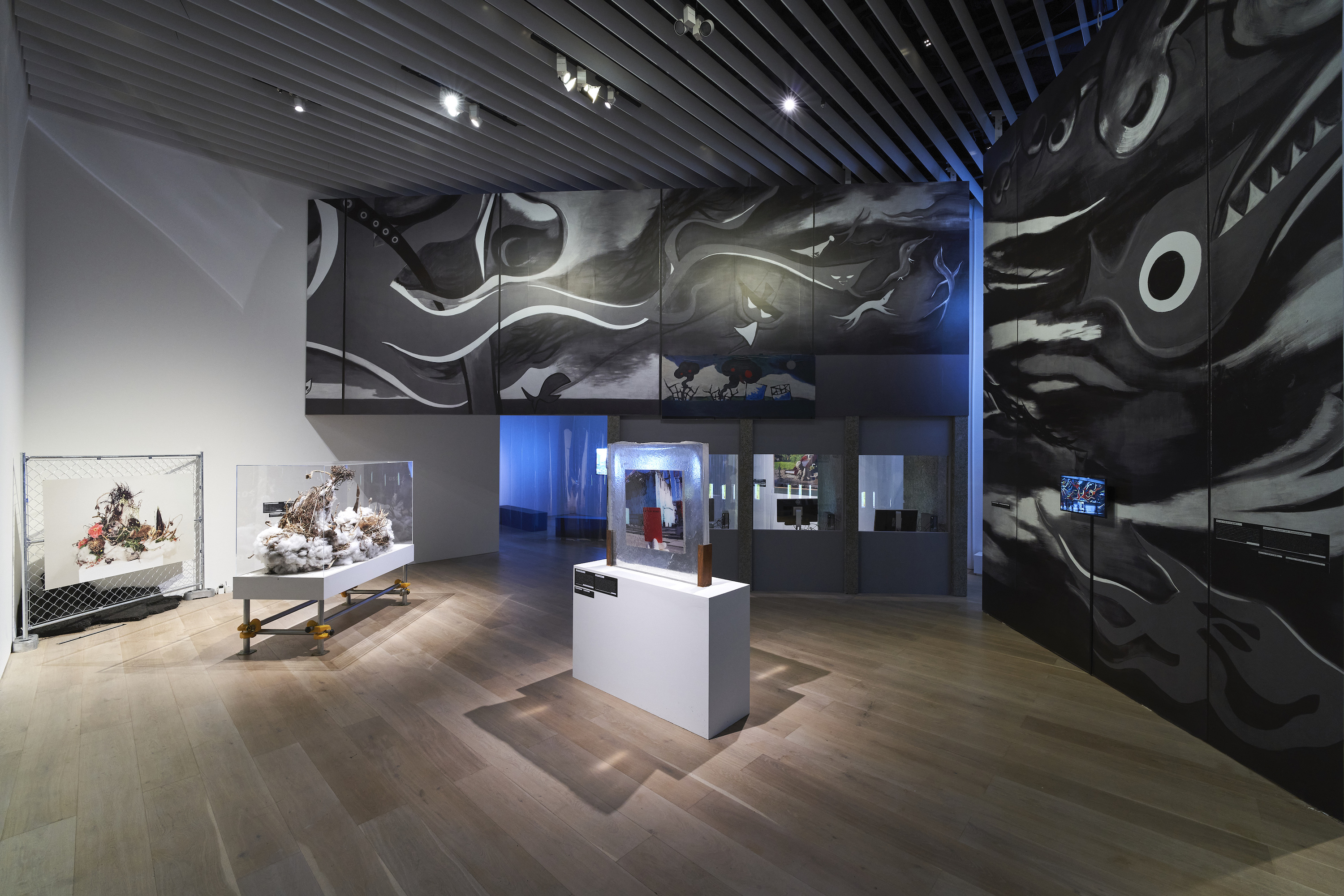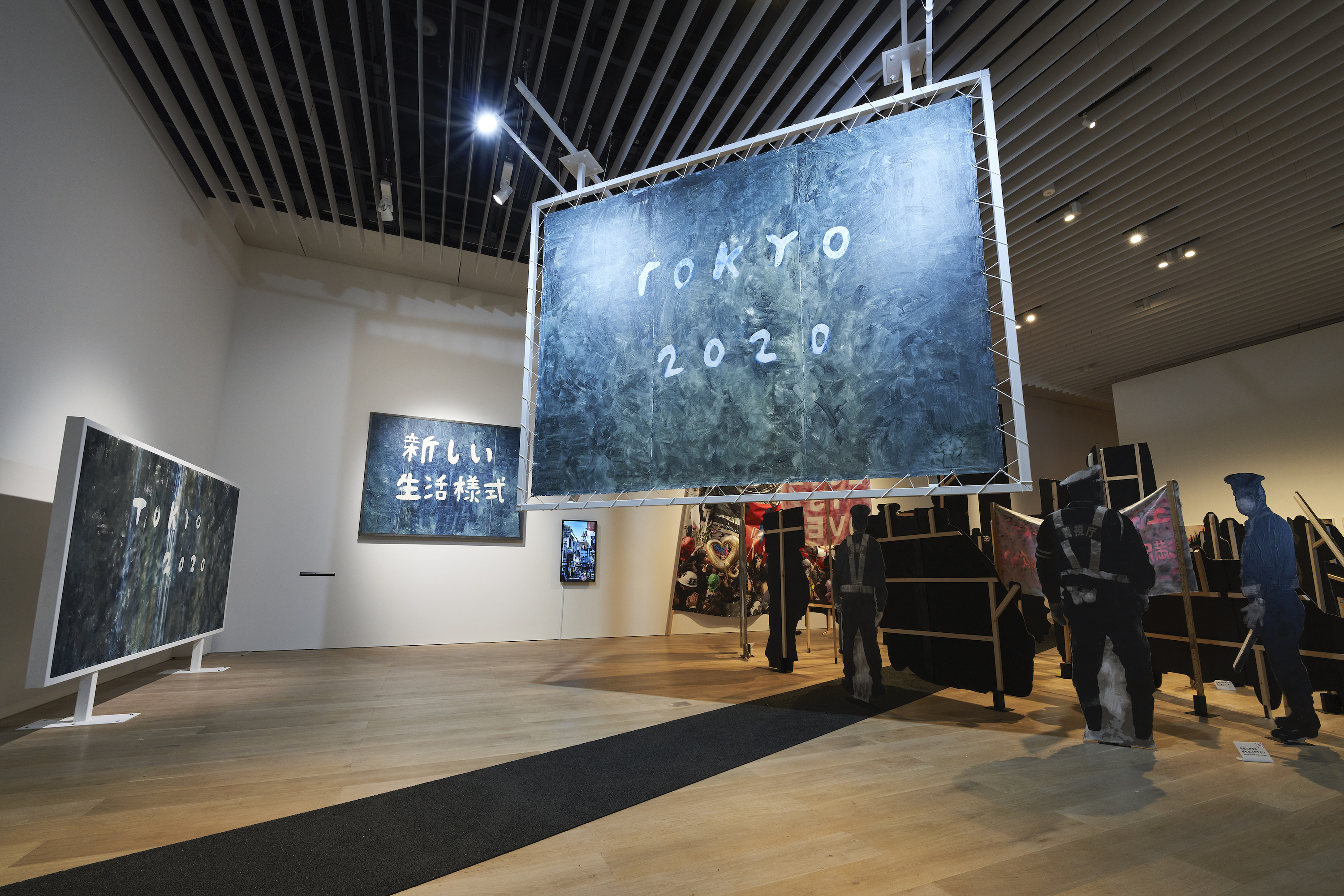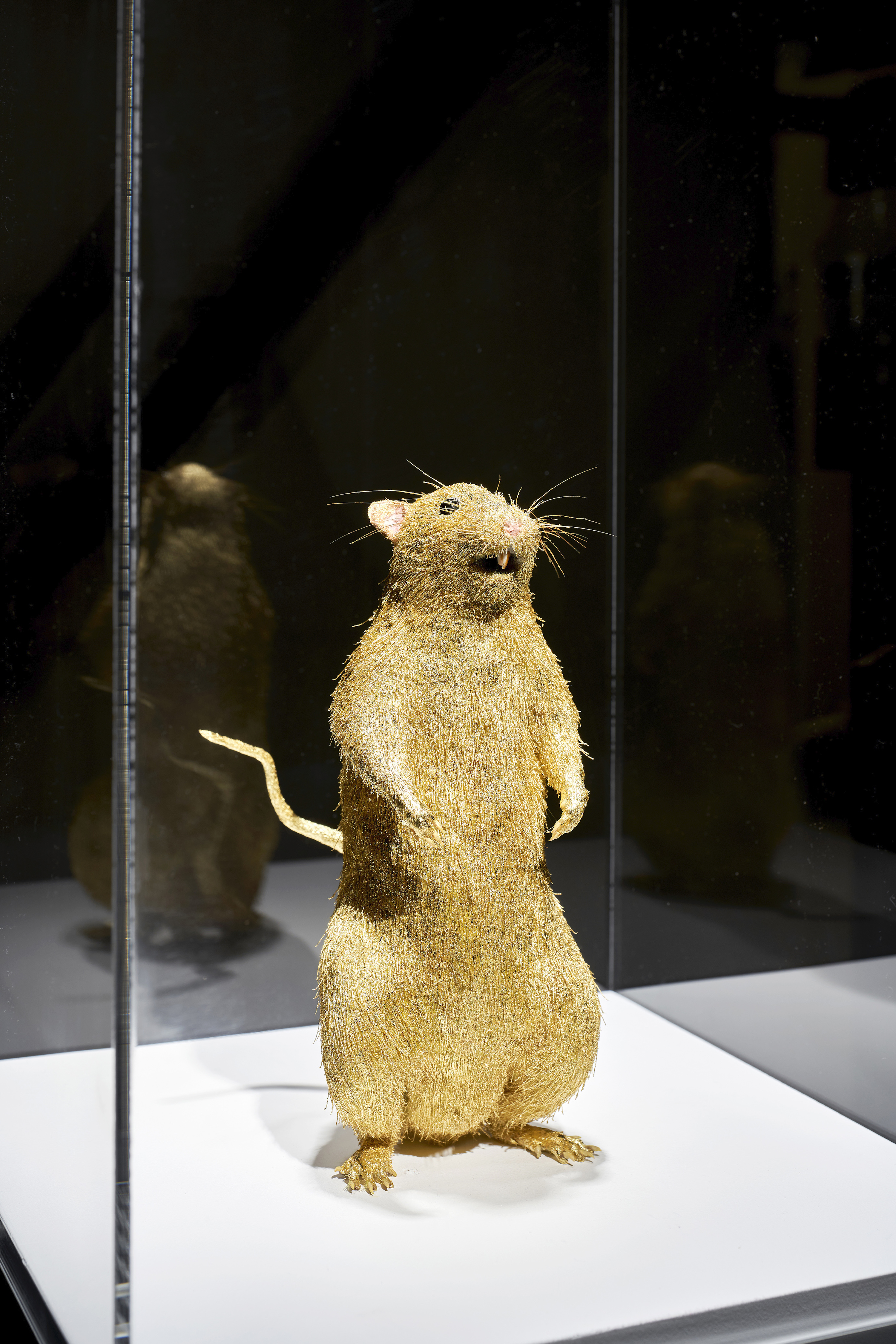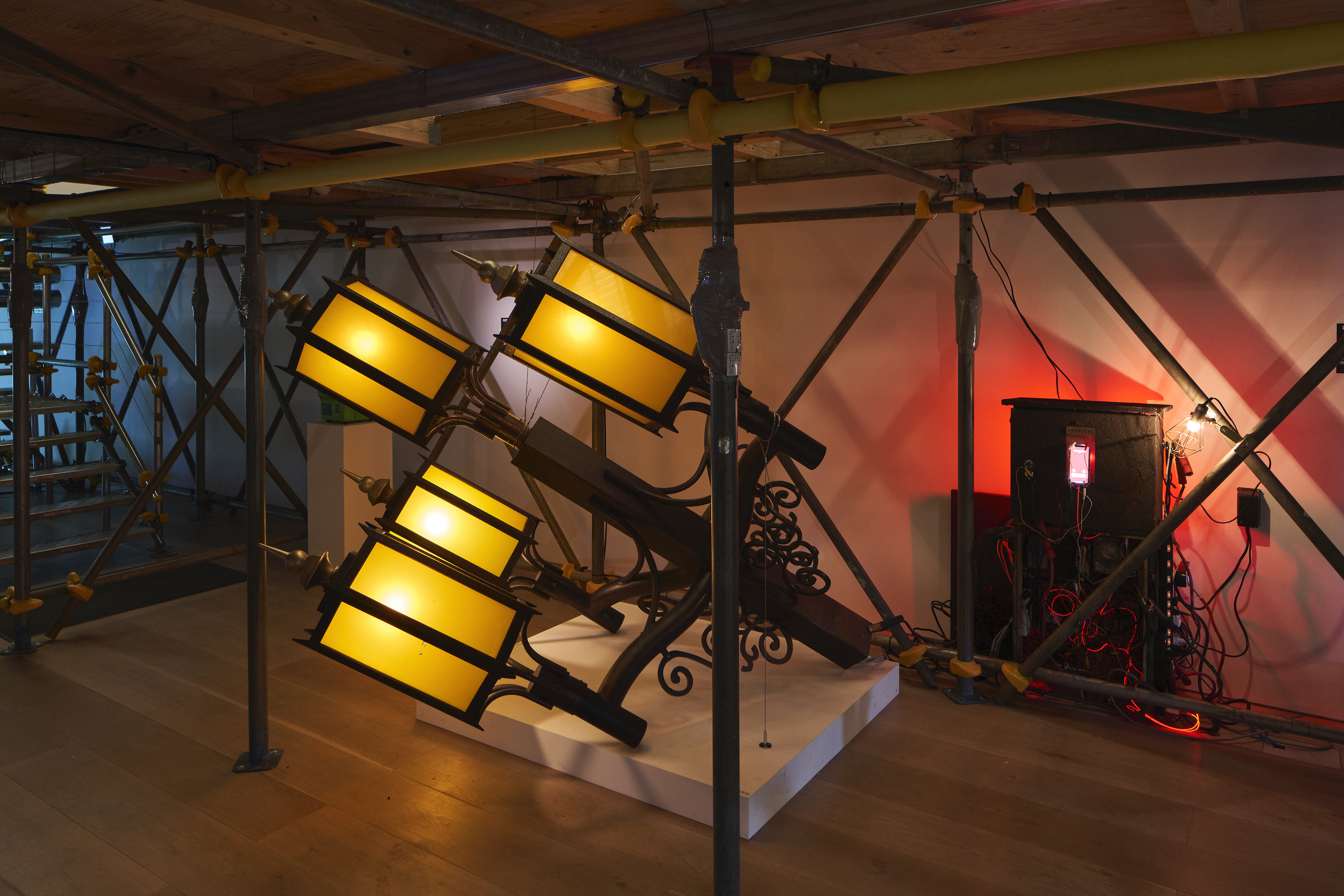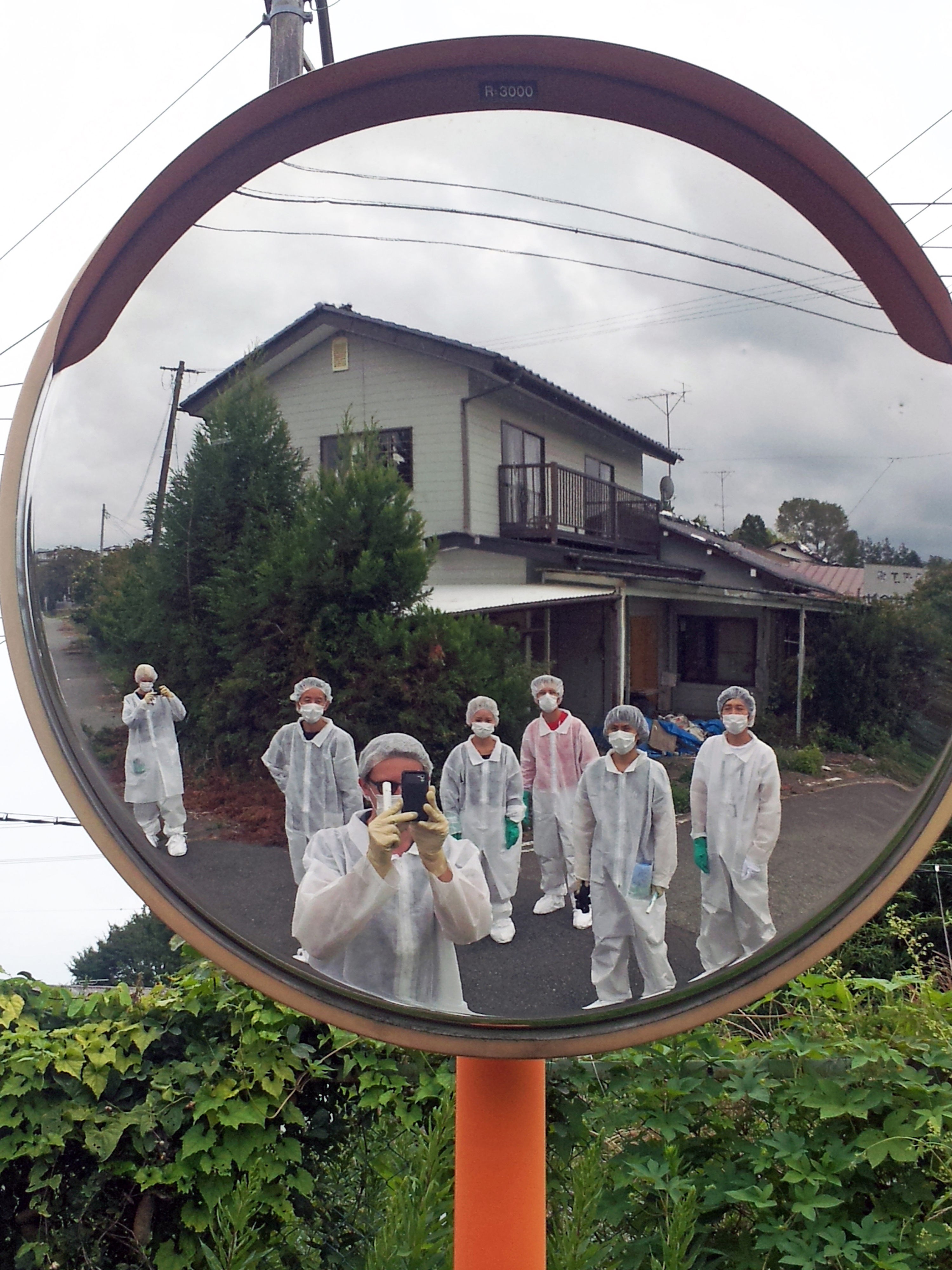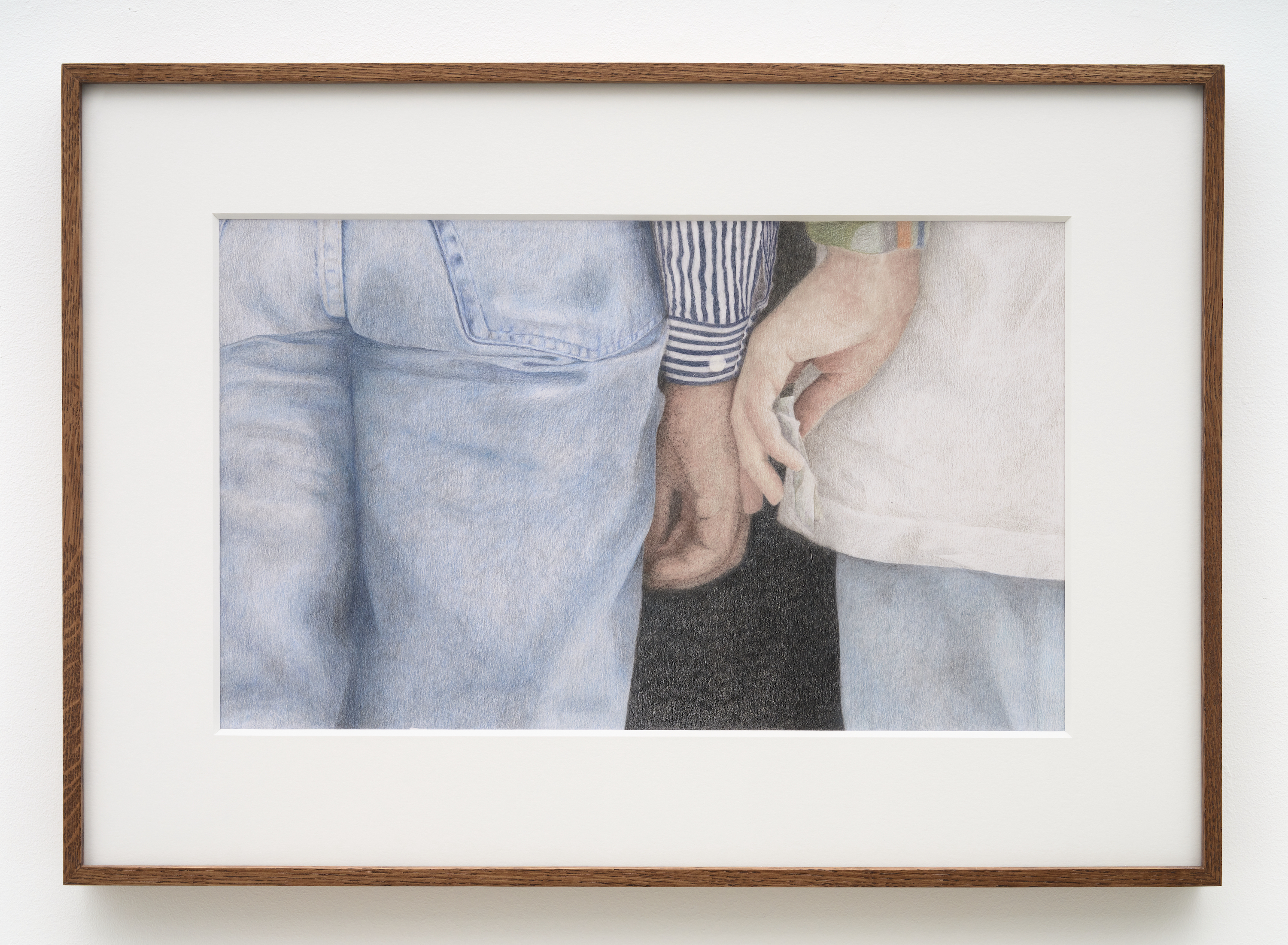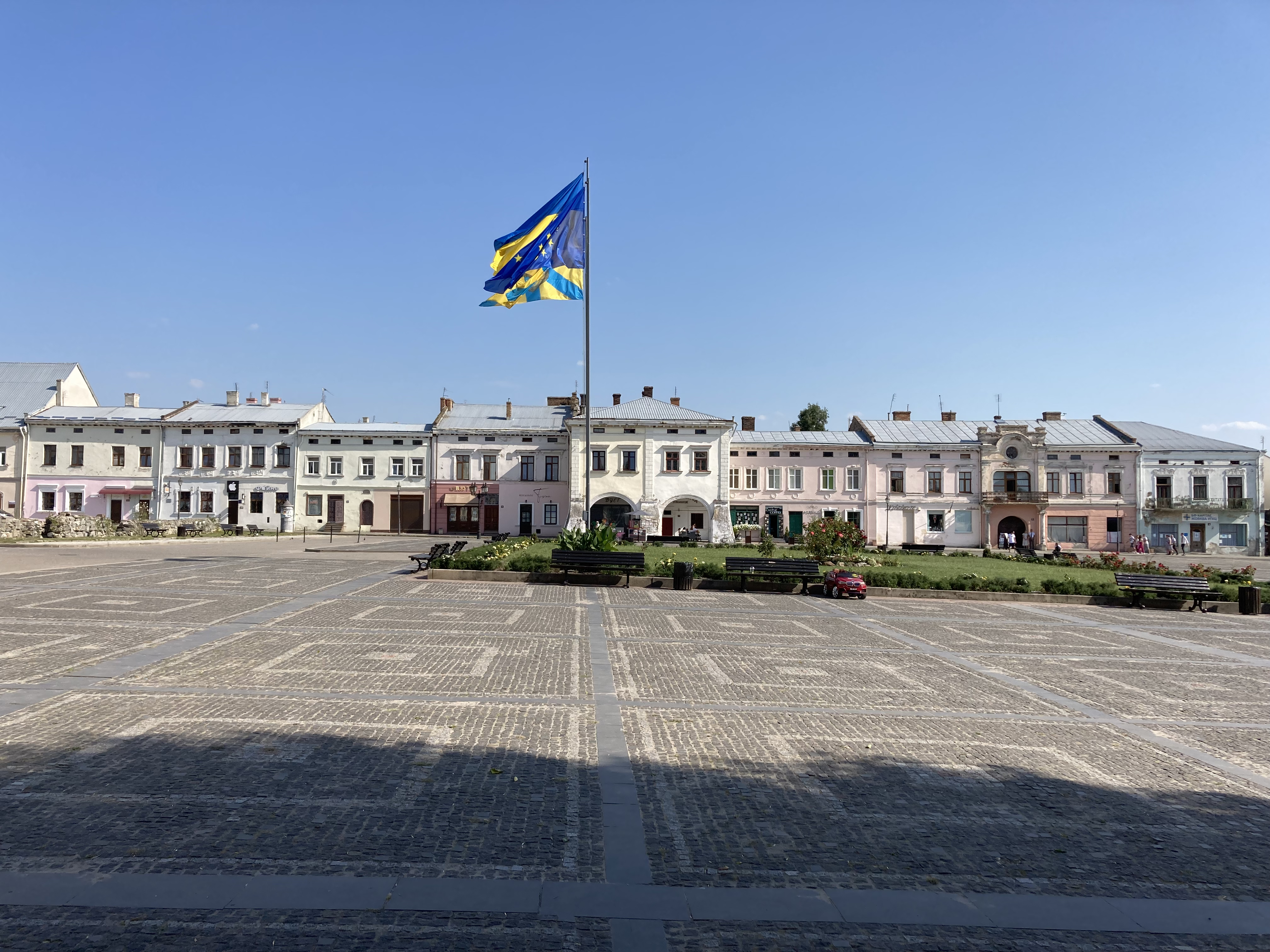February 18–May 29, 2022
A number of art exhibitions have, in recent years, disrupted cultural institutions in Japan. Take the allegations of censorship at the 2016 MOT Annual, which resulted in two curators being let go, or the temporary closure of the 2019 Aichi Triennale after violent threats were made against its organizers. To this list can be added “Happy Spring” at the Mori Art Museum, the work of the six-person, Tokyo-based collective founded in 2005 and known at the time of the show’s opening as Chim↑Pom. In late April, the group changed its name to Chim↑Pom from Smappa!Group in response to the institution’s refusal of sponsorship from its long-time collaborator Smappa!Group, an organization which runs a number of “host clubs” in Tokyo. The museum claimed this was a “branding” issue; the artists argued that it could be regarded as “discrimination against nightlife workers”—an already stigmatized section of Japanese society.1 All that can be said with certainty is that this group’s first retrospective, curated by Kenichi Kondo, was long overdue and worth undertaking, although its longer-term effects remain uncertain.
The pulsing, unruly show at Mori Art Museum centers around a replica street shaped like an ouroboros that runs throughout the institution. That this museum is situated on the 53rd floor of Roppongi Hills Mori Tower highlights the gap between the group’s grassroots practice and an institution floating in the sky. In an allusion to the museum’s own elevation from the city, the viewer enters the first gallery to find themselves beneath a road held up by scaffolding. This darkened “underground” includes much of the group’s early work, such as the video BLACK OF DEATH (2007), in which they rally crows to fly ominously over Tokyo’s landmarks, alongside demolished building interiors pancaked between slabs of concrete (Build Burger, 2018). Climbing onto the surface of the road, the viewer finds it almost entirely empty. Instead of displaying objects, this street functions as a temporary autonomous zone—albeit one encased in a museum—at the heart of a living exhibition. Over the course of the show, a thrift market has cropped up here on the weekends, with prospective sellers hauling their recycled clothing and used wares up the elevators; a non-stop stream of street performers has been given free access; an occasional massage service has been offered; and even a rave was thrown. Just like in the streets of Tokyo below, there is no event list or scheduled program.
Other elements of the retrospective are more clearly signposted. The show is grouped into non-chronological thematic sections (“Cities and Publicness,” “Street,” and so on) corresponding to the group’s ongoing interests, including their engagement with the legacy and survivors of the Hiroshima nuclear attack (“Hiroshima”), durational interventions into the Fukushima exclusion zone (“Don’t Follow the Wind”), and, more broadly, work on borders including the United States/Mexico divide (“Things Revealed Ten Years on from the 2011 Quake, and Now Amid the Pandemic”). Among the new commissions is Crying Museum (2022). This crowd-funded day nursery both calls attention to the Tokyo government’s failure to provide adequate childcare provisions, and grapples with the group’s own intergenerational transformation now that a few of its members have children.
Since the collective’s foundation, the commons of the city street has provided its space of community, education, and experimentation: its idols are the Tokyo rats that have grown immune to poison and thrive in the cracks of urban infrastructure. In an annual ritual, the group finds and captures a few of these creatures in Shinjuku, an area known for its nightlife. In a paradoxical veneration and sacrifice, using DIY taxidermy they transform the rodents into “Super Rats,” their fur dyed yellow and black in reference to the iconic Pikachu Pokémon character and a tongue-in-cheek play on the pop culture–fueled “Superflat” movement championed by an earlier generation of artists such as Takashi Murakami. Despite the importance of the “Super Rat” series to the group, it is glaringly absent from the museum. Rather, a new “Golden rat,” titled SUPER RAT HAPPY SPRING (2022) and sans-Pokémon reference, is shown at the entrance to the exhibition. Meanwhile, in a second small venue—a low-slung office building a half-hour’s walk away—a single “Super Rat” stands in a vitrine next to a private security guard.
The exclusion of this piece from the museum proper—as recently noted by the artists in their statement on their name change—is a curatorial compromise made necessary by the fact that The Pokémon Company is a tenant in the same Roppongi Hills Mori Tower as the Mori Art Museum. Both building and museum are owned by the Mori Building Company, and The Pokémon Company objected to the work’s inclusion. That the museum’s workers are employees of the Mori Building Company, as are several members of the museum board, sits uncomfortably with the museum's status as a not-for-profit organization. Chim↑Pom from Smappa!Group highlights contradictions, such as these, between Tokyo’s street life and the property developers who profit from it. If the motto of the 1968 uprisings in Paris was “Under the pavement, the beach!” then the slogan of this exhibition and the turmoil that surrounds it might be “Under the street, the Mori Building Company!”
“Notice of a change of name,” Chim↑Pom from Smappa!Group, 2022: http://chimpom.jp/project/namechange.html.
